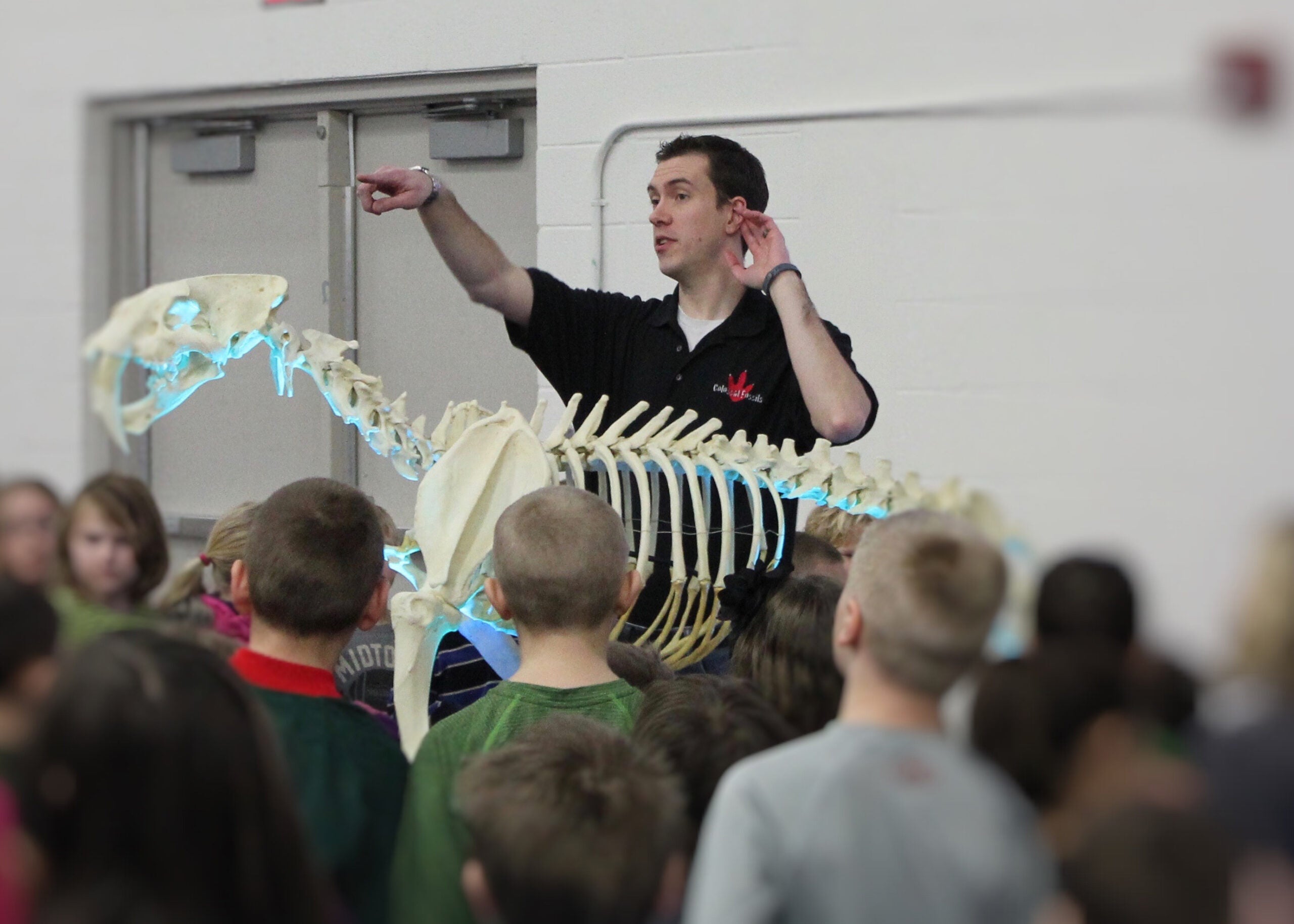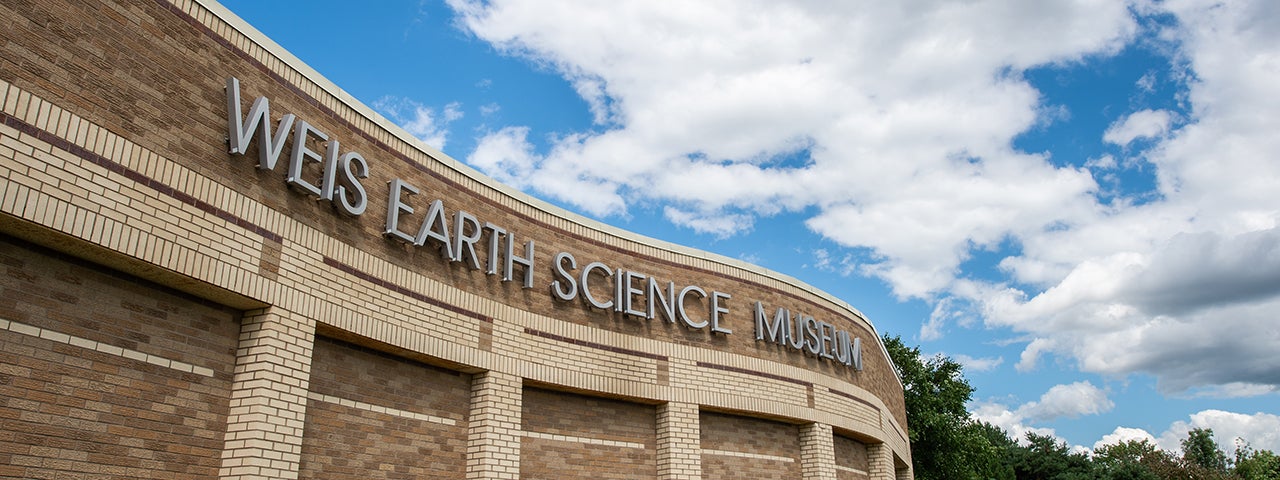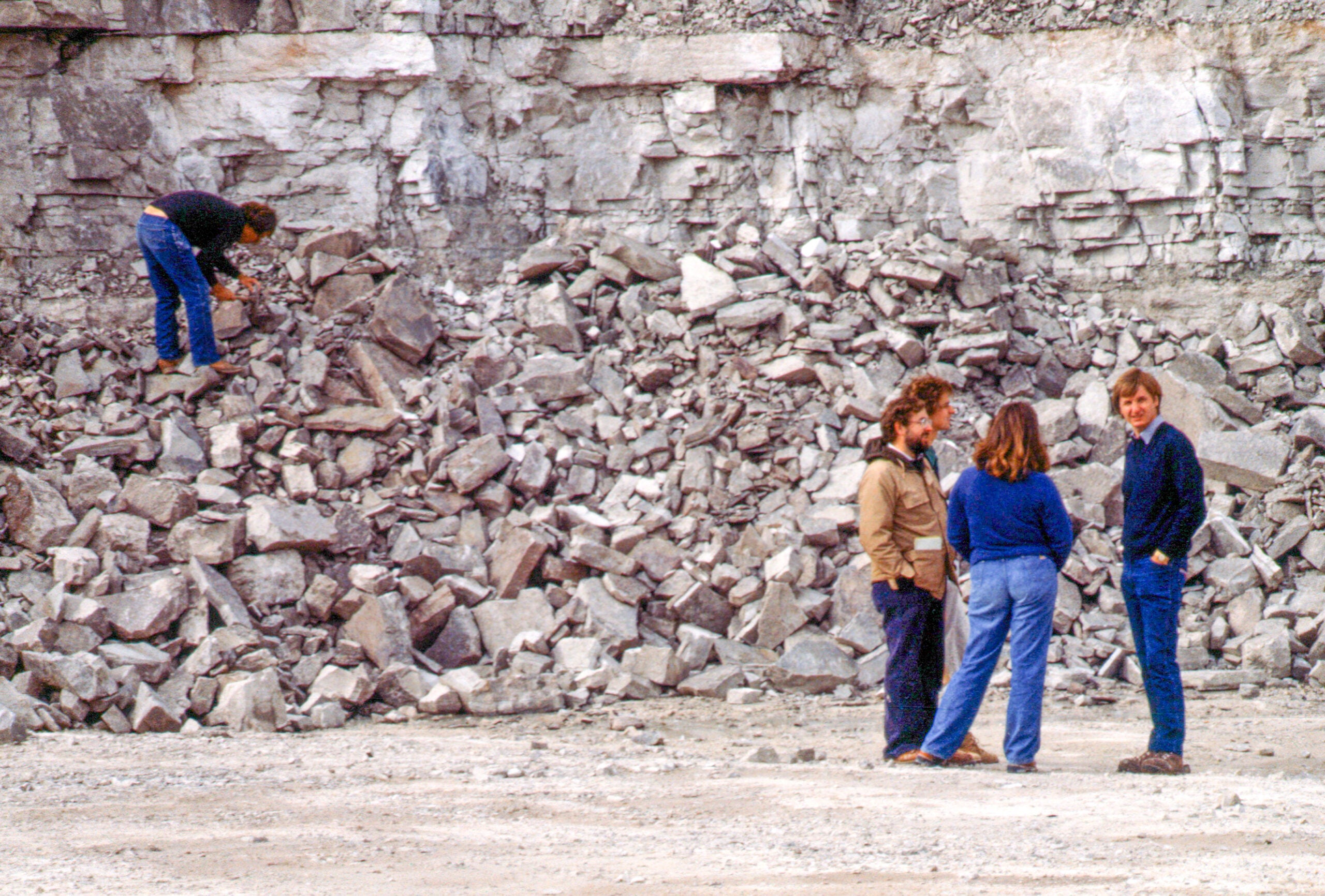Growing up in the village of Soldiers Grove in southwest Wisconsin, David Daniels didn’t have quick access to some of the best-stocked museums cities like Madison and Milwaukee were home to.
So, when he grew up and landed in Wausau, Daniels and his wife decided to use his small childhood fossils collection to start Colossal Fossils in 2011, which found permanent residence at the Wausau Center Mall two years ago.
Lately, Colossal Fossils’ fossils have been hitting the road, making stops as part of a central Wisconsin tour that started in late February. The next tour will take place Friday and Saturday, March 15 and 16, at Les & Jim’s Lincoln Lanes in Merrill. Tours also are planned for Janesville, Tomahawk, Wisconsin Rapids and Madison, among others.
News with a little more humanity
WPR’s “Wisconsin Today” newsletter keeps you connected to the state you love without feeling overwhelmed. No paywall. No agenda. No corporate filter.

Dave Daniels speaks to students while showcasing a woolly mammoth fossil replica. Photo courtesy of Dave Daniels
“Our claim to fame is let the kids touch it,” said Daniels, executive director of the museum. “Why not?”
The museum features replica fossils from dinosaurs and ice age mammals, such as woolly mammoths, mastodons and saber-toothed cats. Fawning over historical relics can incite interest in the state’s own natural history, which is part of the museum’s charge of providing interactive, natural history programs to schools and communities in Wisconsin.
The museum’s residence at the Wausau mall is open just a few days a month to allow staff time to travel to communities and showcase the fossils. They bring nearly every fossil with them on the tours, and have established an efficient system to set up and take down the exhibits quickly.
Adding to the collection this year will be a cast replica of a Tyrannosaurus rex named Ivan, which the museum bought after about a year of fundraising. Ivan will be relocated to the Wausau museum this summer.
“He’s just huge,” Daniels said.
One of the trophy fossils that comes to mind for Daniels when he thinks of Wisconsin’s history are jellyfish.
There are remnants from an ancient ocean that covered parts of what is now Wisconsin half a billion years ago, said Brooke Norsted, assistant director for the University of Wisconsin Geology Museum based in Madison.
“At that time, that would’ve been the perfect spring break destination — these big sandy beaches, the oceans were full of interesting creatures,” Norsted said.
In this shallow ocean’s wake was sandstone and limestone that encased fossils of trilobites and other multi-cellular organisms, such as the jellyfish.
Even prior to Wisconsin’s ocean, the state was home to volcanoes and mountains, evidenced by the prevalence of red granite, which is a rock formed from magma that cools inside a volcano.
“When you hold that rock, you’re holding that history of these volcanoes in Wisconsin,” Norsted said.
Wisconsin’s climate took a cooler turn from ancient times to about a million years ago with an ice age. And while it’s easy to think of glaciers as bulldozers, Norsted said they were more like dump trucks.
“They pick up materials and it freezes into the ice,” she explained. “Then they carry that along for hundreds of miles and then when the ice melts, it drops.”
It’s during this time that the woolly mammoths became prevalent. Another of Daniel’s favorite pieces in his exhibit is a replica skull of a woolly mammoth that was found in Kenosha that is the most complete skeleton of the largest woolly mammoth in North America. Its tusks are 11 feet long, his body riddled with butcher marks, Daniels said. The creature is estimated to be 14,500 years old.
It’s through these exhibits — that in total comprise about 2,000 square feet — that students in smaller communities get a chance to learn about what Wisconsin’s boundaries have seen.
“We paint a picture of Wisconsin’s geology through time, and kids really get a good understanding and a wonderful appreciation for this state,” Daniels said.
Fun Facts
- The oldest rocks in Wisconsin are 3 billion years old — they are from a time we wouldn’t recognize our planet, when continental masses were being formed and volcanoes were found in Wisconsin.
- Red granite is the state rock, and the oldest rock in the state. It forms in cooling volcanoes. Columns of red granite can be found at the state Capitol.
- Much of our fossil history comes from the Paleozoic era, when Wisconsin was covered by a warm, shallow sea. These fossils are of jellyfish, relatives of modern cephalopods and trilobites.
- The Coulee Region in Wisconsin, defined by deep valleys in southwest Wisconsin known as the Driftless Area, was never touched by glaciers. The valleys exist because they didn’t get filled in with debris deposited by glaciers.
- Glacial ice will move into an area and then retreat. That doesn’t mean it’s flowing the other direction. It means that things are melting faster than they’re moving forward. In areas like Milwaukee County, ice flowed over, melted back and then moved back over an area several times before receding for good.
- The ice sheet that enveloped Wisconsin would’ve been up to five miles thick at its center, estimated to be over the Hudson Bay area.
- Some buildings in Madison are on piles of debris left behind by the glaciers. The state Capitol and Bascom Hill are built on drumlins, formed under the sheet of ice.
- Elver Park is an example of a moraine.
Wisconsin Public Radio, © Copyright 2025, Board of Regents of the University of Wisconsin System and Wisconsin Educational Communications Board.




